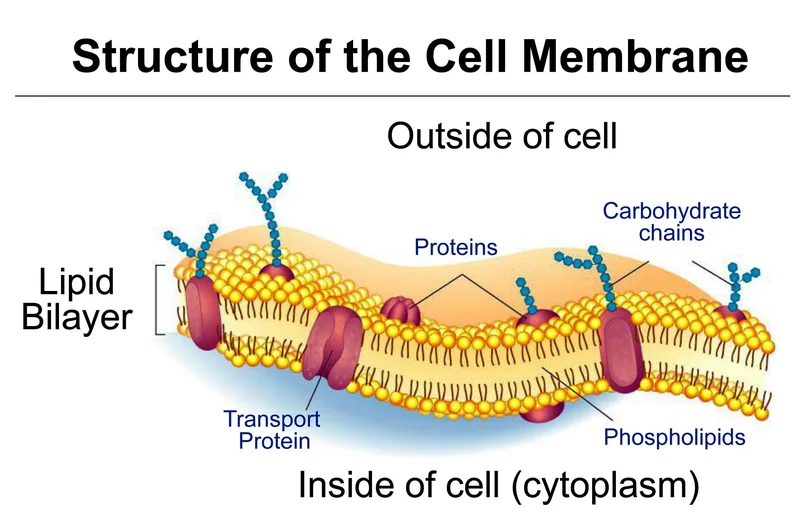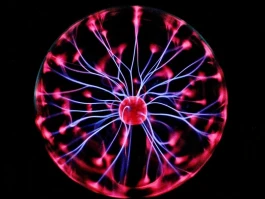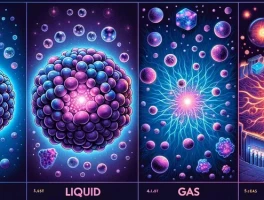When you hear the word “plasma,” what comes to mind? For most of us, it’s probably one of two things. Maybe you think of the high-tech gleam of a plasma TV, a technology that already feels a bit dated. Or, more likely, you think of the stark, clinical process of donating blood plasma, a vital act of giving that, for some, has become a desperate measure to make ends meet, as we’ve seen with TSA workers during government shutdowns. It’s a word grounded in the mundane, the everyday, the struggle.
But what if I told you that this same word—plasma—is also the key to understanding the birth of our universe and the secret to powering our future? What if this fourth state of matter, this superheated, electrically charged gas, is the bridge between the single hottest moment in history and the brightest possible tomorrow for humanity?
We are living through a quiet revolution in our understanding of plasma, and it’s happening on three fronts simultaneously: we’re listening to the echoes of creation, we’re studying the living heart of our solar system, and we’re building a star right here on Earth. This isn’t just abstract science. This is the blueprint for the next chapter of civilization.
From Cosmic Echoes to Earthly Furnaces
Let’s start at the beginning. The very beginning. Just millionths of a second after the Big Bang, the entire universe was a seething, impossibly hot cauldron of something called quark-gluon plasma. In simpler terms, think of it as the universe's primordial soup, a state of matter so hot and dense that the very building blocks of atoms—the protons and neutrons we know—hadn't even formed yet. It was a fluid of free-roaming quarks and gluons. For decades, this was pure theory. We knew it must have existed, but how could we ever hope to study it?
Well, a team at Rice University just did it. Using the Relativistic Heavy Ion Collider—a magnificent machine that smashes atoms together at nearly the speed of light—they recreated the conditions of the early universe. And they took its temperature. When I read that they measured a temperature of over three trillion Kelvin in the plasma’s earliest moments, I honestly just had to put my coffee down and stare out the window for a minute. That’s not a number; it’s a portal back to creation. By analyzing the particles that flew out of this tiny fireball, they developed a "thermal map," charting how this cosmic soup cooled and condensed into the matter that eventually formed galaxies, stars, and us. Why does this matter? Because if you want to build something new, you first have to understand the original source code. This is it. This is the universe’s source code.

Now, let's fast-forward 13.8 billion years. We’re no longer just trying to understand the plasma of the past; we’re trying to build with the plasma of the future. I’m talking about nuclear fusion. It’s been the holy grail of clean energy for 70 years, famously dismissed as being perpetually “50 years away.” But that old joke is starting to wear thin. The challenge has always been containment. To fuse atoms and release their immense energy, you need to create and control a plasma hotter than the core of the sun. No physical material can withstand that.
This is where the real paradigm shift is happening. Researchers at places like Penn State are now asking, Q&A: Could liquid metal be used to contain the power of stars?, and experimenting with flowing liquid metals and incredibly complex magnetic fields to form a self-healing container for the plasma. Think of it like trying to hold a lightning bolt in a bottle made of flowing mercury. It’s an absolutely audacious feat of engineering. And here’s the thing: advancements in high-temperature superconducting magnets, powerful microwave sources, and artificial intelligence are all hitting at once and it’s creating this incredible feedback loop where progress isn’t just linear anymore, it’s exponential. We’re not just inching closer; we’re making fundamental leaps.
What does a world powered by fusion look like? It means limitless, carbon-free energy from an abundant fuel source—basically, from water. It’s an end to energy scarcity, a transformation of geopolitics, and maybe, just maybe, the technology that finally takes us to the stars. Are there immense challenges left? Of course. But for the first time, the path forward isn’t just a theoretical dream; it’s an engineering problem we are actively solving.
And between the cosmic past and our technological future lies the present: our own sun, a magnificent, living plasma laboratory. Just recently, scientists finally cracked the mystery of "solar rain"—giant blobs of cooler plasma that condense in the sun's outer atmosphere and fall back to the surface. The breakthrough confirms that Yes, it rains on the Sun and scientists have finally worked out why. They discovered it’s driven by subtle shifts in the elemental makeup of the plasma, which changes how it radiates heat and cools. This might sound like a minor detail, but it’s huge. It proves our models of how plasma behaves are getting dramatically more accurate. Every secret we unlock about the sun is another tool we can use to perfect the artificial stars we’re trying to build on Earth.
This is the kind of progress that reminds me why I got into this field in the first place. We're moving from seeing plasma as a strange, destructive force of nature to understanding it with the precision of a clockmaker. It’s a journey not unlike humanity's relationship with electricity. For millennia, it was just lightning—a terrifying, unpredictable spectacle. Then we learned to generate it, to channel it, and it lit up our world. We are at that same inflection point with plasma. We are learning to tame the fire of the gods. And with that power comes a profound responsibility to wield it with wisdom, to ensure that the boundless energy we unlock lifts all of humanity, not just a select few.
We're Learning to Speak the Universe's Language
For so long, we've been shouting questions into the cosmos and getting only silence back. But now, by deciphering the thermal signature of the Big Bang, by modeling the intricate dance of solar rain, and by wrestling a star into a magnetic bottle, we are finally starting to understand the fundamental grammar of reality. Plasma is that language. It wrote the first chapter of the universe, and it’s offering to help us write the next. The only question left is, what kind of future will we choose to build with it?




